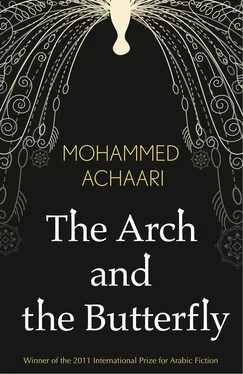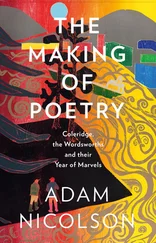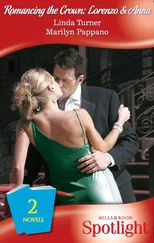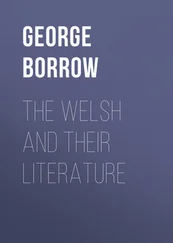Around this time Ahmad Majd was finishing what he said was the apartment building of his life. It was a huge structure close to the new main road, where buildings were not supposed to be higher than four floors to avoid blocking what was left of the view of the High Atlas mountains from inside the medina. But Ahmad Majd had fought a bitter war to go up nine floors. That battle forced him to buy, at market price, a nearby lot that allowed him to move his apartment building a few metres away from the first location, which would have blocked the view of the Atlas entirely.
Ahmad Majd used to say that the city was a city and the mountain a mountain, so why did anyone want to drink their coffee in the street as their sleepy eyes roamed over the High Atlas? ‘Plus, my brother,’ he would continue, ‘no one looks at the mountains when they’re walking or driving in the street. That’s just tourist nonsense summed up in that stupid photo of someone lying under a luxuriant palm tree, smelling the orange blossom and gazing at the snow on the Atlas. Bullshit! All that’s left to do is add a Tanjia pot to the scene to conjure up stewed kidney from under the ground.’
Despite all that was said about the apartment building, Ahmad Majd pushed ahead with the project. He said that what Marrakech needed was a building that would free it of the spirit of the distant past and bring a bit of frivolity into the city, to break the grip of the ubiquitous brick colour, the palm trees and the general appearance of a stop for desert caravans. He shaped his building in the form of a giant butterfly, with a nightclub below the ground floor and restaurants at ground level. A vast banquet hall and shops were located on the first five floors, while luxury apartments occupied the remaining floors. An amazing apartment would take up the whole of the ninth floor, where the residents would have the Koutoubia in the palm of their hands.
Foreign companies competed to be awarded the interior design on all the floors. Ahmad Majd did not specify any features for the interior except for materials and shapes. The external decor consisted of a soaring butterfly, and the inhabitants of Marrakech did not wait long to nickname the building the Butterfly, which became the official name used by city residents as a reference point for appointments and on maps.
People were struck by this building with its provocative shape, located in the heart of the medina, whose ancient character was protected by an army of conservatives, informants and the curious. But few of them knew that the apartments on the top four floors were the ones that had allowed the building to sprout without anyone seeing it. Whenever I asked Ahmad Majd in total innocence about the owners of those luxury apartments, he would mention a number of rich Gulf Arabs, and a world-renowned French perfume maker on the top floor. He did not mention the name of a single Moroccan. I would smile at that, and he would smile back and say, ‘The building will remain a mystery. There’s no point in insisting.’
On the ninth of May that year, Ahmad Majd organised the opening of the Butterfly. It was a celebration exactly as he had planned for many years and it surpassed everything people had imagined about celebrations, even the reopening of the Hotel La Mamounia in the 1980s. The echoes of those festivities had reached the landings of Kenitra central prison where Ahmad Majd had been incarcerated. He had never suspected then what would happen less than a quarter of a century later. Even those celebrations with all their splendour did not amount to one tenth of what Ahmad Majd designed for the inauguration of his new building.
At the opening of the Butterfly, hundreds of young men wearing the same traditional red costume and the same striped Marrakechi hat stood on both sides of the building. Thousands of butterflies, guided by invisible threads, and thousands of multicoloured birds, pigeons and doves invaded the Marrakech sky. Hundreds of guests were transported from their respective hotels to the Butterfly on the backs of white camels. A waterfall gushed from the top of the building to its marble courtyard. For years to come people would remember the philharmonic orchestra that came all the way from Berlin and the dozens of male and female singers who performed. Behind the stage where they were singing was the largest butterfly, revealing the colourful and brightly lit balconies of the building. People would especially remember that for the first time since Marrakech started having festivities, dancing and partying till late at night, hundreds of men and women roamed the city from one end to the other, carrying plates of dates and glasses of milk. Ahmad Majd had had the drink glasses made especially for the occasion. He’d engraved the name of the building and the date of the opening of its huge shopping mall on the glasses, along with a picture of baby Ghaliya with a sentence below it reading: ‘ This is by the grace of God .’ The crowd partied to the early hours of the morning.
The official celebration ended about midnight. Ahmad Majd said after the opening party ended he would go up to the dream apartment on the ninth floor as a guest of the French owner, the perfumier, who had paid cash for the apartment without seeing it. I asked if it were possible for me to know the price of the apartment, but Ahmad Majd laughed, saying, ‘Can you just enjoy yourself and keep quiet?’
Fatima, Layla and I joined Ahmad. The apartment opened into a circular hall in the style of the Andalusian domes, and in the middle was a fountain of intertwining horses made of white marble, jets of water spouting from their mouths. A group of guests hovered around this piece of art, talking at length about the well-known British sculptor who had made it especially for the apartment. I had the impression I knew the sculptor, having seen him in a catalogue Fatima had brought me from an exhibit of major European sculptors a few years earlier in Strasbourg. Fatima confirmed my guess. She was open-mouthed in amazement: the sculpture cost more than all our apartments put together. Layla said she found the hall vulgar, and she was right. But her opinion in no way affected the mood of this second festivity, and I was surprised by Ahmad Majd’s anger, for he heard the comment as he was making room for himself among us. Nevertheless, I decided to stay in a good mood for the party and refrain from any cheap jibes. The most amazing thing in the apartment was the swimming pool. It stretched to the end of the balcony and gave the impression that the water was flowing in the street. Layla and I stood there for a long time admiring the illuminated swimming pool, which revealed a huge mosaic mural. We were looking at it in awe when our happy host approached us and explained that the mural was a Byzantine mosaic that had followed him for thirty years, from one house to another. He added, ‘I think it has finally settled down in this suspended paradise.’
Layla asked, ‘Where was it thirty years ago?’
‘I don’t know exactly. My business rep bought it at a British auction. So I imagine it was somewhere in the Middle East.’ Then he asked us if the reflection of the light on the mosaic bothered us from this angle, and Layla assured him there was no reflection at all. ‘Good,’ he said. ‘I just wanted to make sure. We placed a glass cover on the mural to protect it, and I feared it would reflect the rays.’
Layla said, ‘I’m just trying to imagine the void that the removal of this masterpiece left behind.’
Our host replied in a friendly tone, ‘It would be like any other void, my lady. A mere void.’
We spent a long time admiring the apartment, which felt like a museum. There were sculptures from the Far East, Persian miniatures, Turkish glassware, and a mix of textiles, leather and silver and copper vessels. There were also works by the major Orientalist painters, including Delacroix and Jacques Majorelle. Layla jokingly suggested stealing them. I told her there was certainly an electronic security system in place to protect the treasures, which had already been stolen once during their lifetime.
Читать дальше












